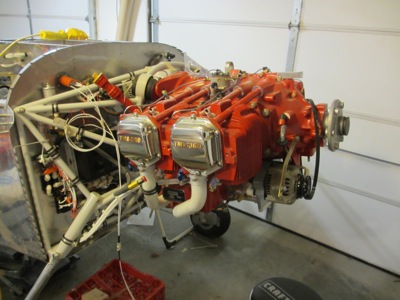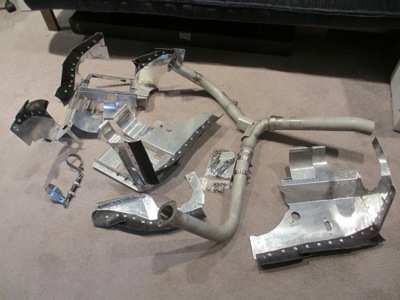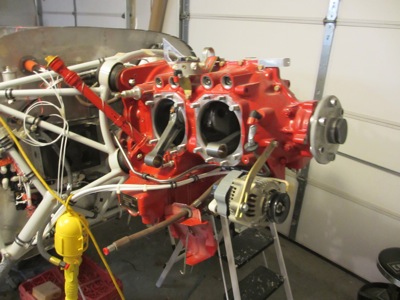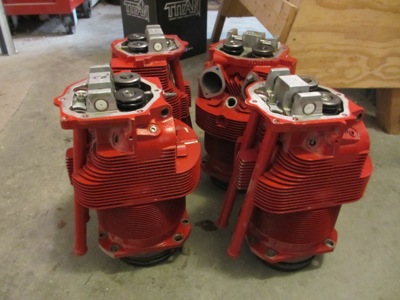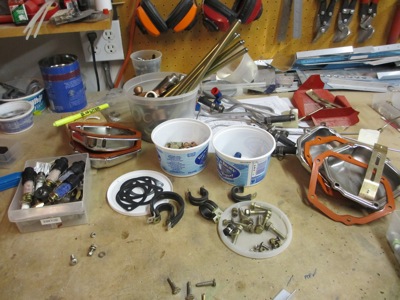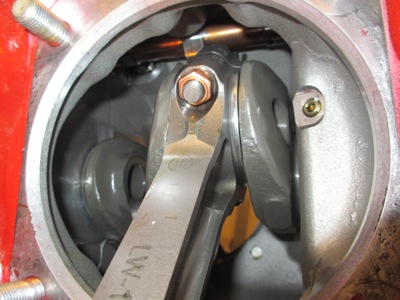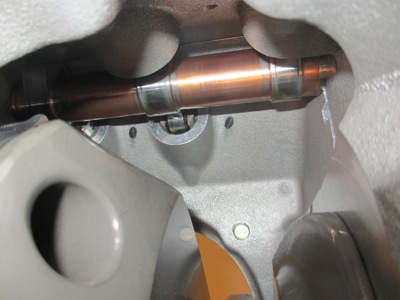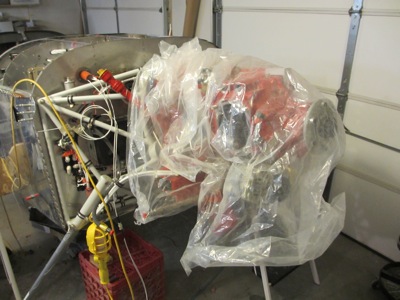I decided to sell my panel-mounted transponder and replace it with a remote-mounted unit instead. This is the GTX 23ES:

The unit itself is a faceless silver box – instead of pushing buttons on the transponder's front panel, you control it through the screen of your G3X system. It mounts in this sheet-metal tray, which I now have to find a place for.

The only practical place left in the airplane where I can mount something this size is the area under the baggage compartment floor on the passenger side of the fuselage. Needless to say, I'm glad I made my baggage floors removable.

The piece of aluminum angle shown here is riveted to the inboard floor rib with countersunk rivets, and it will act as a little shelf for the transponder tray to sit on. Some of the open holes visible in the rib are for tie wrap anchors that I temporarily removed to give myself space to work, but some are from little brackets and other things that I've since removed. This particular area of the airplane has undergone more changes than almost any other part, as I've installed various pieces of equipment and then later changed my plan and removed them in favor of something else.

Four pieces of angle plus some rivets became a pair of T-brackets, seen here riveted to the outboard floor rib. Keep reading to see what these are for.

I fabricated these two identical mounting braces out of some more aluminum angle. The mill was handy for removing excess material where it wasn't needed.

The braces attach to the transponder tray like so:

Closeup detail of how the braces attach to the tray, using #6 screws in the countersunk holes that are thoughtfully provided:

Here's how it all goes together. The transponder is oriented with the connectors facing towards the nose of the aircraft. The braces stay permanently attached to the tray, the tray sits on the longitudinal angle (not visible) and the braces are fastened in four places to the T-brackets and the inboard floor rib. It's kind of an odd setup, but it fits in the available space and is quite sturdy. Just as important, it is all fairly easy to remove if required.

Wiring… power and ground, RS-232 to the GSU 73, ARINC 429 to the two 430W's for TIS-A traffic display, and RS-232 for GPS position data from 430W #1 so I will be ADS-B Out compliant.

Wires routed and secured, all neat and tidy:

The transponder antenna coax carries high-power RF and shouldn't be routed with any other cable bundles (so says the install manual, anyway). I ran it inboard to the center tunnel, aft, and back outboard again to miss the elevator bellcrank on its way to the antenna. It's tie-wrapped to the floor rib with the usual plastic cable anchors.

You may have wondered earlier why I removed material from the middle of the mounting braces. If you look at this photo you can see that It's simply to prevent creasing the baggage compartment floor if I put something heavy on it (such as my knee!) that causes it to flex downward between the floor ribs. Well, it probably saves a few grams of weight too.

The overhead view shows why I had to make the tray removable, instead of permanently mounting the tray and just sliding the transponder in and out – no room! The under-floor avionics bay is physically not long enough to allow the transponder to be removed from the tray, even if I'd scrunched up the wiring and mounted it as far forward as humanly possible. So, to remove the transponder I'll have to undo four fasteners, lift the tray out of the floor, and then remove the transponder from the tray. I shouldn't have to do this too often, so hopefully it won't be too inconvenient.

Everything worked on the first try – after a few keystrokes for configuration, the transponder controls popped up on the PFD.

The only thing left to do on the transponder is to finish securing the antenna coax and connect it to the antenna on the belly. I'll tackle that eventually when I get around to venturing into the tailcone to finish up all the wiring back there. Right now that area is in a state of… let's go with "disarray".

Oh, you may be wondering why I decided to go to all this trouble in the first place. Why remove a perfectly good transponder from the panel just to put in a different one that's mounted somewhere else? Naturally, it was to make room in the panel for another toy… just what kind, I'm not telling yet.


























